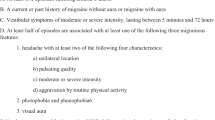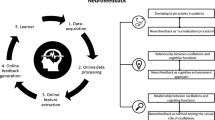Abstract
Essential tremor (ET) is a common tremor disorder that is likely neurodegenerative. The pathophysiology of ET involves the cerebellum and its connections in the brainstem and thalamus. Hearing dysfunction has been shown to be a non-motor finding in ET patients. A limited number of studies have suggested that cochlear pathology is the cause, but studies have not evaluated the integrity of the primary auditory pathway in ET. The main aim of this study is to investigate the integrity of the auditory pathway via auditory brainstem response (ABR) and auditory middle latency response (AMLR), thereby allowing us to evaluate the auditory pathway from the 8th cranial nerve to the cerebral cortex. Sixteen ET patients and sixteen age- and gender-matched controls (64 ears) were evaluated. In the ABR study, we detected prolongation of wave V peak latencies (ms) in ET (p = 0.02). In the AMLR study, P0 (p = 0.03), Pa (p = 0.008), Na (p = 0.03), and Nb (p = 0.01) waves differed between the two groups. Eleven ET patients and four control subjects had abnormal electrophysiological findings (ABR or AMLR or both) (68.8% vs. 25%, p = 0.01). Tremor duration was greater in ET patients with abnormal electrophysiological findings (p = 0.01). Finally, we observed prolongation of latencies after the ABR III wave, indicating that abnormalities exist within the superior olivary complex. For the first time, our research provides evidence that ET-related pathology is present at the subcortical and cortical levels of the auditory pathway.
Similar content being viewed by others
Abbreviations
- ABR:
-
Auditory brainstem response
- AMLR:
-
Auditory middle latency response
- ET:
-
Essential tremor
References
Aitkin LM, Boyd J (1978) Acoustic input to the lateral pontine nuclei. Hear Res 1:67–77
Akshoomoff NA, Courchesne E, Townsend J (1997) Attention coordination and anticipatory control. Int Rev Neurobiol 41:575–598
Azumi T, Nakashima K, Takahashi K (1993) Auditory middle latency responses in patients with epilepsy. Electromyogr Clin Neurophysiol 34:185–191
Balaban H, Altuntaş EE, Uysal IO, Sentürk IA, Topaktaş S (2012) Audio-vestibular evaluation in patients with essential tremor. Eur Arch Otorhinolaryngol 269:1577–1581. https://doi.org/10.1007/s00405-011-1801-x
Benito-León J, Labiano-Fontcuberta A (2016) Linking essential tremor to the cerebellum: clinical evidence. Cerebellum 15:253–262. https://doi.org/10.1007/s12311-015-0741-1
Benito-León J, Louis ED, Bermejo-Pareja F (2007) Neurological disorders in central spain (NEDICES) study group reported hearing impairment in essential tremor: a population-based case-control study. Neuroepidemiology 29:213–217
Bhatia KP, Bain P, Bajaj N, Elble RJ, Hallett M, Louis ED, Raethjen J, Stamelou M, Testa CM, Deuschl G (2018) Consensus statement on the classification of tremors. from the task force on tremor of the International Parkinson and Movement Disorder Society. Mov Disord 33(1):75–87
Celebisoy N, Aydo I, Ekmekci O, Akyurekli O (1996) Middle latency auditory evoked potentials (MLAEPs) in (MS). Acta Neurol Scand 93:318–321
Cerasa A, Quattrone A (2016) Linking essential tremor to the cerebellum-neuroimaging evidence. Cerebellum 3:263–275. https://doi.org/10.1007/s12311-015-0739-8
Desmond JE, Fiez JA (1998) Neuroimaging studies of the cerebellum: language, learning and memory. Trends Cogn Sci 2:355–362
Filip P, Lungu OV, Manto MU, Bareš M (2016) Linking essential tremor to the cerebellum: physiological evidence. Cerebellum 15:774–780 (Review)
Green JB, Burba A, Freed DM, Elder WW, Xu W (1997) The P1 component of the middle latency auditory potential may differentiate a brainstem subgroup of Alzheimer disease. Alzheimer Dis Assoc Disord 11(3):153–157
Grimes AM, Grady CL, Pikus A (1987) Auditory evoked potentials in patients with dementia of the Alzheimer type. Ear Hear 8:157–161
Hallett M, Grafman J (1997) Executive function and motor skill learning. Int Rev Neurobiol 41:297–323
Handforth A (2016) Linking essential tremor to the cerebellum-animal model evidence. Cerebellum 15:285–298. https://doi.org/10.1007/s12311-015-0750-0
Huffman RF, Henson OW Jr (1990) The descending auditory pathway and acousticomotor systems: connections with the inferior colliculus. Brain Res Rev 15:295–323
Japaridze G, Shakarishvili R, Kevanishvili Z (2002) Auditory brainstem, middle latency, and slow cortical responses in multiple sclerosis. Acta Neurol Scand 106:47
Kodama Y, Ieda T, Hirayama M, Koike Y, Ito H, Sobue G (1999) Auditory brainstem responses in patients with autonomic failure with Parkinson’s disease and multiple system atrophy. J Auton Nerv Syst 24(77):184–189
Kratochwil CF, Maheshwari U, Rijli FM (2017) The long journey of pontine nuclei neurons: from rhombic lip to cortico-ponto-cerebellar circuitry. Front Neural Circuits 17(11):33. https://doi.org/10.3389/fncir.2017.00033
Kraus N, McGee T (1990) Clinical applications of the middle latency response. J Am Acad Audiol 1(3):130–133
Kraus N, Ozdamar O, Hier D, Stein L (1982) Auditory middle latency responses (MLRs) in patients with cortical lesions. Electroencephalogr Clin Neurophysiol 54:275–287
Louis ED (2016a) Non-motor symptoms in essential tremor: a review of the current data and state of the field. Parkinsonism Relat Disord 22:115–118. https://doi.org/10.1016/j.parkreldis.2015.08.034
Louis ED (2016b) Linking essential tremor to the cerebellum: neuropathological evidence. Cerebellum 153:235–242. https://doi.org/10.1007/s12311-015-0692-6(Review)
Louis ED (2016c) De sedibus et causis morborum: is essential tremor a primary disease of the cerebellum? Cerebellum 15:233–234. https://doi.org/10.1007/s12311-015-0689-1
Louis ED (2018) Essential tremor and the cerebellum. Handb Clin Neurol 155:245–258. https://doi.org/10.1016/B978-0-444-64189-2.00016-0
Louis ED, Okun MS (2011) It is time to remove the ‘benign’ from the essential tremor label. Parkinsonism Relat Disord 17:516–520. https://doi.org/10.1016/j.parkreldis.2011.03.012
Louis ED, Joyce JL, Cosentino S (2019) Mind the gaps: what we don’t know about cognitive impairment in essential tremor. Parkinsonism Relat Disord. https://doi.org/10.1016/j.parkreldis.2019.02.038([Epub ahead of print] Review)
Marin-Lahoz J, Gironell A (2016) Linking essential tremor to the cerebellum: neurochemical evidence. Cerebellum 15:243–252. https://doi.org/10.1007/s12311-015-0735-z
Martini A, Comacchio F, Magnavita V (1991) Auditory brainstem and middle latency evoked responses in the clinical evaluation of diabetes. Diabet Med 8:74–77
McGee T, Kraus N, Comperatore C, Nicol T (1991) Subcortical and cortical components of the MLR generating system. Brain Res 29(544):211–220
Molinari M, Leggio MG, Solida A, Ciorra R, Misciagna S, Silveri MC, Petrosini L (1997) Cerebellum and procedural learning: evidence from focal cerebellar lesions. Brain 120:1753–1762
Musiek F, Nagle S (2018) The middle latency response: a review of findings in various central nervous system lesions. J Am Acad Audiol 29:855–867. https://doi.org/10.3766/jaaa.16141
Neves IF, Gonçalves IC, Leite AR, Magliaro ACL, Matas CG (2007) Middle latency response study of auditory evoked potentials’ amplitudes and lantencies audiologically normal individuals. Rev Bras Otorrinolaringol 73:75–80. https://doi.org/10.1590/S0034-72992007000100012
Nojszewska M, Pilczuk B, Zakrzewska-Pniewska B, Rowińska-Marcińska K (2007) The auditory system involvement in Parkinson disease: electrophysiological and neuropsychological correlations. J Clin Neurophysiol 26(6):430–437. https://doi.org/10.1097/WNP.0b013e3181c2bcc8
O'Mahony D, Rowan M, Feely J, Walsh JB, Coakley D (1994) Primary auditory pathway and reticular activating system dysfunction in Alzheimer’s disease. Neurology 44:2089–2094
Ondo WG, Sutton L, Dat Vuong K, Lai D, Jankovic J (2003) Hearing impairment in essential tremor. Neurology 28(61):1093–1097
Petacchi A, Laird AR, Fox PT, Bower JM (2005) Cerebellum and auditory function: an ALE meta-analysis of functional neuroimaging studies. Hum Brain Mapp 25:118–128
Phillips NA, Connolly J, Charles Mate-Kole C, Gray J (1997) Individual differences in auditory middle latency responses in elderly adults and patients with Alzheimer’s disease. Int J Psychophys 27:125–136
Pickles JO (2015) Auditory pathways: anatomy and physiology. Handb Clin Neurol 129:3–25. https://doi.org/10.1016/B978-0-444-62630-1.00001-9
Profant O, Roth J, Bureš Z, Balogová Z, Lišková I, Betka J, Syka J (2017) Auditory dysfunction in patients with Huntington’s disease. Clin Neurophysiol 128(10):1946–1953. https://doi.org/10.1016/j.clinph.2017.07.403
Purdy SC, Kelly AS, Davies MG (2002) Auditory brainstem response, middle latency response, and late cortical evoked potentials in children with learning disabilities. J Am Acad Audiol 13:367–382
Rapoport M, Van Reekum R, Mayberg H (2000) The role of the cerebellum in cognition and behavior: a selective review. J Neuropsychiatry Clin Neurosci 12:193–198
Robinson K, Rudge P (1977) Abnormalities of the auditory evoked potentials in patients with multiple sclerosis. Brain: J Neurol 100:19–40
Schmahmann JD, Sherman JC (1998) The cerebellar cognitive affective syndrome. Brain 121:561–579
Shim HJ, An YH, Kim DH, Yoon JE, Yoon JH (2017) Comparisons of auditory brainstem response and sound level tolerance in tinnitus ears and non-tinnitus ears in unilateral tinnitus patients with normal audiograms. PLoS ONE 18(12):e0189157. https://doi.org/10.1371/journal.pone.0189157(eCollection 2017)
Stacy MA, Elble RJ, Ondo WG, Wu SC, Hulihan J, TRS study group (2007) Assessment of interrater and interrater reliability of the Fahn–Tolosa–Marin tremor rating scale in essential tremor. Mov Disord 30:833–883
Starr A, Achor J (1975) Auditory brain stem responses in neurological disease. Arch Neurol 32:761–768
Ten Donkelaar HJ (2011) Clinical neuroanatomy, ©Springer-Verlag, Berlin, Heidelberg, 305. 10.1007/978-3-642-19134–3_7
Yilmaz NH, Akbostanci MC, Yılmaz N (2015) Sensorineural hearing loss in non-depressed essential tremor cases and controls: a clinical and audiometric study. Tremor Other Hyperkinet Mov (N Y) 29(5):281. https://doi.org/10.7916/D8XW4HKQ
Acknowledgements
We thank the study participants and control subjects for their contributions to this study and Tess Cersonsky and Keith Radler for their valuable contribution. Corresponding author thanks Turkish Neurological Society and Dr. Rumeyza Kazancıoglu for their support.
Funding
There is no funding source in this study.
Author information
Authors and Affiliations
Contributions
YS participated in the conception and design of the study, the acquisition of data, the analysis and interpretation of data, and drafting the manuscript or revising it critically for important intellectual content. NB participated in the conception and design of the study, the acquisition of data, the analysis and interpretation of data, and drafting the manuscript or revising it critically for important intellectual content. EL participated in the conception and design of the study, the analysis and interpretation of data, and drafting the manuscript or revising it critically for important intellectual content.
Corresponding author
Ethics declarations
Conflict of interest
There is no conflict of interest between authors.
Ethical approval
The study protocol was conducted in accordance with ethical principles stated in the ‘Declaration of Helsinki’ and approved by the Ethical Committee of Bezmialem Foundation University Hospital.
Additional information
Publisher's Note
Springer Nature remains neutral with regard to jurisdictional claims in published maps and institutional affiliations.
Electronic supplementary material
Below is the link to the electronic supplementary material.
Rights and permissions
About this article
Cite this article
Sengul, Y., Bal, N. & Louis, E.D. Evidence of central involvement in essential tremor: a detailed study of auditory pathway physiology. J Neural Transm 127, 1153–1159 (2020). https://doi.org/10.1007/s00702-020-02215-w
Received:
Accepted:
Published:
Issue Date:
DOI: https://doi.org/10.1007/s00702-020-02215-w




